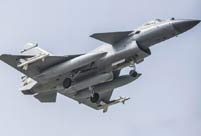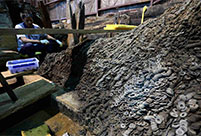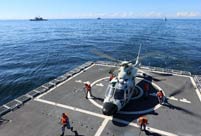

The 23rd APEC Economic Leaders' Meeting (APEC) will be held in Manila of the Philippines from November 18 to 19 with the theme of "Building Inclusive Economies, Building a Better World".
"In recent years, 'Inclusive Economies' has covere the focused topics in the annual APEC meetings. Promoting regional economic integration and establishing the Asia-Pacific free trade area are the top issues for 2015. Being the host of the previous meeting and major economy in the Asia-Pacific region, each cooperation initiatives put forward by China will be concerned. " said Liu Chenyang, director of APEC Study Center in Nankai University.
Coincidentally, the word "inclusive" appears in the themes of the 10th G20 summit and the 23rd APEC Economic Leaders' Meeting.
"'Inclusive' is a key element of building the concept of Asia-Pacific partnership, which relates to the diversity of economic development model, the universality of participants and the coordination of economic and social development in many aspects. Inclusive is not only the prerequisite for cooperation and common development, but also the guarantee of equal partnership, " Liu Chenyang said.
Last year marks the 25th anniversary of the APEC. During the meeting held in Beijing, many important documents such as "Roadmap for promoting the Free Trade Area of the Asia-Pacific (FTAAP) process " had been endorsed, which specified the vision and pathway of the future economic cooperation in the Asia-Pacific region.
"'Inclusive growth' can better consider the interests of the relevant countries, is the important method and guarantee to implement all the documents endorsed," Liu Chenyang said.
"Promote regional economic integration needs to balance the interests of all parties, meet the demands of the developed and developing economies, formulate the framework and mechanism of inclusive cooperation, " Liu Chenyang said.
"Currently, there are more than 200 trade arrangements in the Asia-Pacific region, with different standards and preferential policies and rules of origins, which may lead to vicious competition among trade groups and not conducive to deepening economic and trade cooperation between the countries," said Liu Chenyang, adding that Asia-Pacific economic cooperation still has much room for development. Further trade facilitation in the Asia-Pacific region, higher-level and larger free trade area will resolve the issue of regional trade agreements fragmentation and inject new vitality into the development of regional economy.
During the APEC summit held in Beijing last year, the economies agreed to start a joint strategic study on the Free Trade Area of the Asia-Pacific (FTAAP), marking the official launch of the FTAAP process. At present, progress has been made in APEC roadmap on FTAAP and the joint strategic study is expected to complete by the end of 2016.
According to Liu Chenyang, the FTAAP is the important path to realize "inclusive growth", adding that it's not easy to reach the agreement, and all parties should take an inclusive attitude in the process.
China is the world's second largest economy and the important economic and trade partners of APEC members. The countries hope to understand China's economy, and listen to China's initiative and perspective on boosting regional cooperation and trade facilitation.
 J-10B fighters with homegrown engine in test fligh
J-10B fighters with homegrown engine in test fligh Photos of U.S. Navy intruding in South China Sea released
Photos of U.S. Navy intruding in South China Sea released Cats who immediately regretted their life choices in photographs
Cats who immediately regretted their life choices in photographs Beautiful girl from police college becomes Internet hit
Beautiful girl from police college becomes Internet hit 10 tons of copper coins unearthed in 2,000-yr old tomb
10 tons of copper coins unearthed in 2,000-yr old tomb In Pics: Amazing Chinese fighters
In Pics: Amazing Chinese fighters
 Chinese, U.S. navies hold first-ever joint exercise in the Atlantic
Chinese, U.S. navies hold first-ever joint exercise in the Atlantic When a Chinese woman marries an Indian man
When a Chinese woman marries an Indian man Photos of beautiful teacher hit the Internet
Photos of beautiful teacher hit the Internet Top 20 hottest women in the world in 2014
Top 20 hottest women in the world in 2014 Top 10 hardest languages to learn
Top 10 hardest languages to learn 10 Chinese female stars with most beautiful faces
10 Chinese female stars with most beautiful faces China’s Top 10 Unique Bridges, Highways and Roads
China’s Top 10 Unique Bridges, Highways and Roads Melody makers
Melody makers Autos on autopilot
Autos on autopilot Chinese buy slice of British education
Chinese buy slice of British education US is bringing storms to South China Sea
US is bringing storms to South China SeaDay|Week